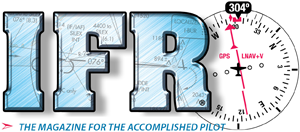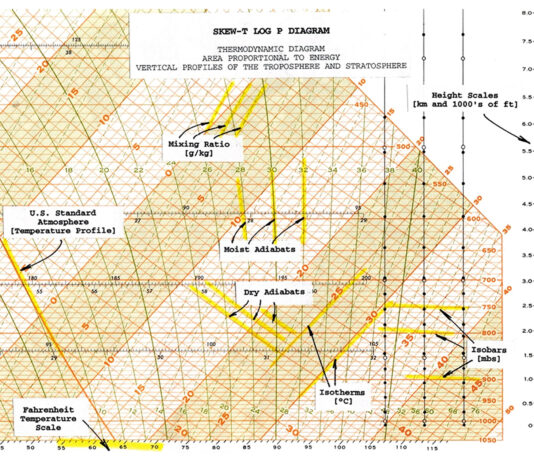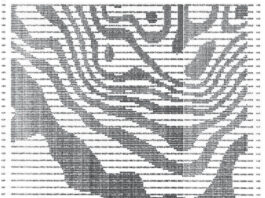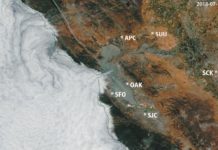How the Wind Blows
The root cause of wind is the unequal heating of the earth. We usually take it for granted that tropical areas are hot while polar areas are cold. But whether youre in Greenland or Venezuela, the sunlight is the same. Its the angle at which the suns rays hit the ground that makes the difference. Near the equator, the summer sun is at very high angles. But, in Greenland the summer sun never gets higher than about 30-40 degrees above the horizon, spreading the energy over a larger area, reducing heating of the ground and air.
Going Around Weather
We all have a different way to go about our flight planning, but most of it is along the lines of where to go, how high, how much fuel, weight and balance, etc. You factor it all into the plan, but at some point youll add that X for some bad weather and a re-route. Maybe the weather is fine where you are departing but not good where you are going, or vice versa. Depending on the mission, what are your options? It all comes down to a go/no-go on what youre comfortable doing and not doing. This is the typical process regardless of whether youre filing VFR or IFR.
Summer Hazards
Without those tools its important to get on the ground or find a route out of the activity if buildups start growing around you, because air mass storms often grow as clusters and the open spaces will quickly close in. If you dont think air mass storms are a problem, check out our August 2018 issue that details two seemingly benign air mass storms: one that downed a Piper PA-23, and another that downed a Boeing 727.
Accidents: AA 1420
One of the last weather-caused airline crashes in the United States was American Airlines Flight 1420 in Little Rock on June 1, 1999. As we mark its 20th anniversary, well tie together some of the radar and thunderstorm skills weve learned in previous articles. Youll also see brand-new radar scans of the storm from modern high-resolution display software-which is far more detailed than that in the NTSB report-and well contemplate what you might see if you encounter a similar storm on modern radar today.
Dissecting T-Storms
A fter a record winter where temperatures fell below -30 degrees F in some parts of the Midwest, its hard to believe summer is approaching again. That means a rapid increase in thunderstorm activity across the country. In this issue our goal is to help you not only understand the parts of a storm but also whats going on underneath the hood and what it means for the forecast. The information also might help save your bacon when things go downhill unexpectedly and all the data you have is whats out the window.
BasicMed Safety Pilot
When we got BasicMed, something wed done for a long time was taken away. BasicMed applies to acting as pilot in command. But, with BasicMed youre not legal to act as a safety pilot for your buddy whos under the hood practicing approaches in VMC. So, you exercise the workaround of agreeing ahead of time that you, the safety pilot, are indeed the PIC for this flight (more on that in a moment), then youre once again good to go even with BasicMed ... if, that is, the aircraft insurance agrees. Lets look more carefully at all this.
Cell Encounterpoint
The answer given in question 2 of the quiz in your November 2018 issue (continue to fly straight through the storm) is incorrect. Fifty years ago I wrote and published the initial research papers on transmitting weather information into the cockpit after almost losing my life due to a thunderstorm. As a nationally recognized aviation radar/weather spokesperson, I continue to educate and update pilots around the country as the program progresses. The history of the Datalink program is best presented by AOPAs video on YouTube. Search for datalink concept to cockpit.
A Stability Refresher
While stability and instability dont always cause weather, they leave a mark on even VFR forecasts in many subtle ways, and they influence everything from wind gusts to cloud layers. Even in forecast models, there are always complex equations that factor in stability. Stability is important enough that an entire chapter is dedicated to it in the FAAs Aviation Meteorology circular. For meteorologists, a chart known as the Skew-T diagram is used every day at forecast centers. Its literally a worksheet that helps forecasters visualize the days stability and make calculations on it.
Ceiling and Visibility
These early pilots depended on a network of rotating beacon towers at four-mile intervals, like lighthouses in the sky. These facilities, operated by the federal government, used lamps powered by cylinders of acetylene. Simply by following the route from beacon to beacon, a pilot could arrive safely at the destination. Weather could be avoided because the planes flew at low altitudes, and illuminated diversion airfields were placed at frequent intervals. If the pilot felt things were deteriorating, he could be on the ground in less than 10 minutes.
Weather Observations
The ASOS system was developed in the late 1980s to relieve the expense of maintaining human observers at hundreds of sites, improve consistency of observations, and bring high-quality observations to rural and remote airports. Much like NEXRAD it was a joint product of the FAA, NWS, and DoD, and was fielded at 1000 US airports between 1991 and 2004. Its main components are temperature, dewpoint, and wind sensors, along with new technology like sky condition, present weather, and visibility sensors.
Readback: January 2019
Another good rule of thumb is Buys Bullots law: To locate where the bad weather is coming from, put your back to the wind and extend your left arm straight out. Thats where the low pressure bad WX is coming from. It works for me.
Stupid Pilot Tricks: 2019
Yep, its time to make fun of those who in 2015 ignored sound judgment and lived to garner pilot lounge derision. And, since pilots tend to repeat the same mistakes in hopes of different results, we heed George Orwell who said, We have now sunk to a depth at which the restatement of the obvious is the first duty of intelligent men. Since no intelligent man or woman stepped forward, its up to me.

















